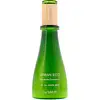What's inside
What's inside
 Key Ingredients
Key Ingredients

No key ingredients
 Benefits
Benefits

 Concerns
Concerns

 Ingredients Side-by-side
Ingredients Side-by-side

Water
Skin ConditioningGlycerin
HumectantCetearyl Alcohol
EmollientCaprylic/Capric Triglyceride
MaskingNiacinamide
SmoothingStearic Acid
CleansingCeteth-20
CleansingTrehalose
HumectantSilica
AbrasiveAvena Sativa Kernel Flour
AbrasiveSodium Hyaluronate
HumectantAllantoin
Skin ConditioningTocopheryl Acetate
AntioxidantChamomilla Recutita Flower Water
MaskingCeramide NP
Skin ConditioningCeramide AP
Skin ConditioningCeramide EOP
Skin ConditioningPhytosphingosine
Skin ConditioningCholesterol
EmollientSodium Lauroyl Lactylate
EmulsifyingCarbomer
Emulsion StabilisingXanthan Gum
EmulsifyingEthylhexylglycerin
Skin ConditioningPhenoxyethanol
PreservativeCaprylyl Glycol
EmollientTromethamine
BufferingSteareth-2
EmulsifyingPotassium Cetyl Phosphate
EmulsifyingDisodium EDTA
Water, Glycerin, Cetearyl Alcohol, Caprylic/Capric Triglyceride, Niacinamide, Stearic Acid, Ceteth-20, Trehalose, Silica, Avena Sativa Kernel Flour, Sodium Hyaluronate, Allantoin, Tocopheryl Acetate, Chamomilla Recutita Flower Water, Ceramide NP, Ceramide AP, Ceramide EOP, Phytosphingosine, Cholesterol, Sodium Lauroyl Lactylate, Carbomer, Xanthan Gum, Ethylhexylglycerin, Phenoxyethanol, Caprylyl Glycol, Tromethamine, Steareth-2, Potassium Cetyl Phosphate, Disodium EDTA
Phormium Tenax Extract
Skin ConditioningButylene Glycol
HumectantGlycerin
HumectantMethyl Gluceth-10
EmulsifyingDimethicone
EmollientDimethiconol
EmollientGlyceryl Acrylate/Acrylic Acid Copolymer
HumectantCetearyl Olivate
Sorbitan Olivate
EmulsifyingCyclopentasiloxane
EmollientCyclohexasiloxane
EmollientPolyacrylamide
C13-14 Isoparaffin
EmollientLaureth-7
EmulsifyingPEG-60 Glyceryl Isostearate
Portulaca Oleracea Extract
Skin ConditioningAcrylates/C10-30 Alkyl Acrylate Crosspolymer
Emulsion StabilisingPotassium Hydroxide
BufferingPhenoxyethanol
PreservativeChlorphenesin
AntimicrobialParfum
MaskingDisodium EDTA
Honey
HumectantCalendula Officinalis Flower Water
MaskingPotassium Sorbate
PreservativeSodium Benzoate
MaskingCitric Acid
BufferingEchinacea Angustifolia Root Cell Culture Extract
Skin Conditioning1,2-Hexanediol
Skin ConditioningPhormium Tenax Extract, Butylene Glycol, Glycerin, Methyl Gluceth-10, Dimethicone, Dimethiconol, Glyceryl Acrylate/Acrylic Acid Copolymer, Cetearyl Olivate, Sorbitan Olivate, Cyclopentasiloxane, Cyclohexasiloxane, Polyacrylamide, C13-14 Isoparaffin, Laureth-7, PEG-60 Glyceryl Isostearate, Portulaca Oleracea Extract, Acrylates/C10-30 Alkyl Acrylate Crosspolymer, Potassium Hydroxide, Phenoxyethanol, Chlorphenesin, Parfum, Disodium EDTA, Honey, Calendula Officinalis Flower Water, Potassium Sorbate, Sodium Benzoate, Citric Acid, Echinacea Angustifolia Root Cell Culture Extract, 1,2-Hexanediol
 Reviews
Reviews

Ingredients Explained
These ingredients are found in both products.
Ingredients higher up in an ingredient list are typically present in a larger amount.
Disodium EDTA plays a role in making products more stable by aiding other preservatives.
It is a chelating agent, meaning it neutralizes metal ions that may be found in a product.
Disodium EDTA is a salt of edetic acid and is found to be safe in cosmetic ingredients.
Learn more about Disodium EDTAGlycerin is already naturally found in your skin. It helps moisturize and protect your skin.
A study from 2016 found glycerin to be more effective as a humectant than AHAs and hyaluronic acid.
As a humectant, it helps the skin stay hydrated by pulling moisture to your skin. The low molecular weight of glycerin allows it to pull moisture into the deeper layers of your skin.
Hydrated skin improves your skin barrier; Your skin barrier helps protect against irritants and bacteria.
Glycerin has also been found to have antimicrobial and antiviral properties. Due to these properties, glycerin is often used in wound and burn treatments.
In cosmetics, glycerin is usually derived from plants such as soybean or palm. However, it can also be sourced from animals, such as tallow or animal fat.
This ingredient is organic, colorless, odorless, and non-toxic.
Glycerin is the name for this ingredient in American English. British English uses Glycerol/Glycerine.
Learn more about GlycerinPhenoxyethanol is a preservative that has germicide, antimicrobial, and aromatic properties. Studies show that phenoxyethanol can prevent microbial growth. By itself, it has a scent that is similar to that of a rose.
It's often used in formulations along with Caprylyl Glycol to preserve the shelf life of products.